The M1903 Springfield Rifle
August 31st, 2021
7 minute read
By the time Gunnery Sergeant Ernest Janson trudged up Hill 142 at Chateau-Thierry, France, on June 6, 1918, he had already logged fourteen years in uniform. After a decade in the U.S. Army, Janson enlisted in the Marine Corps, serving in the Nicaraguan Campaign. On this fateful afternoon, however, some 26 years to the day before American troops stormed ashore on D-Day, Gunny Janson was neck-deep in the suck.
World War I was well into its fourth bloody year, and the world groaned underneath the unprecedented suffocating carnage. The Russians were bled white and quit the war in May of 1918. This freed up some fifty divisions of battle-hardened German troops to tip the balance of power against the Allies in the West. Now with the Germans within 45 miles of Paris, French troops were in retreat. History has come to refer to this particular tidy little meat grinder as the Battle of Belleau Wood.
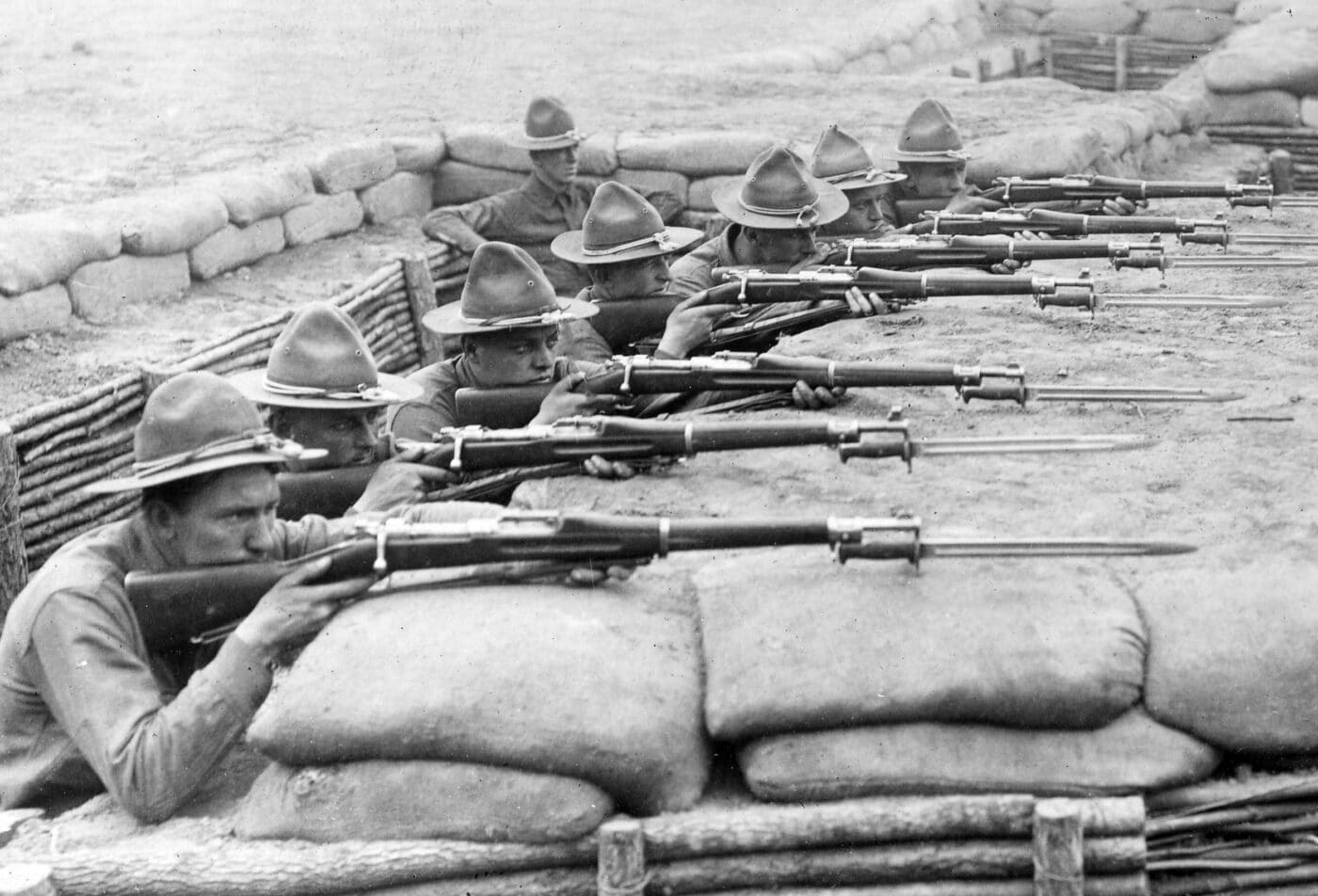
The first U.S. Marines had arrived four days earlier led by CPT Lloyd Williams. Upon their initial deployment to the front lines, the retreating French told them to turn around and go home. CPT Williams famously responded, “Retreat? Hell, we just got here!” Now on June 6, Gunnery Sergeant Janson found himself cut off with the battered remnants of his small unit atop the shattered moonscape that was Hill 142.
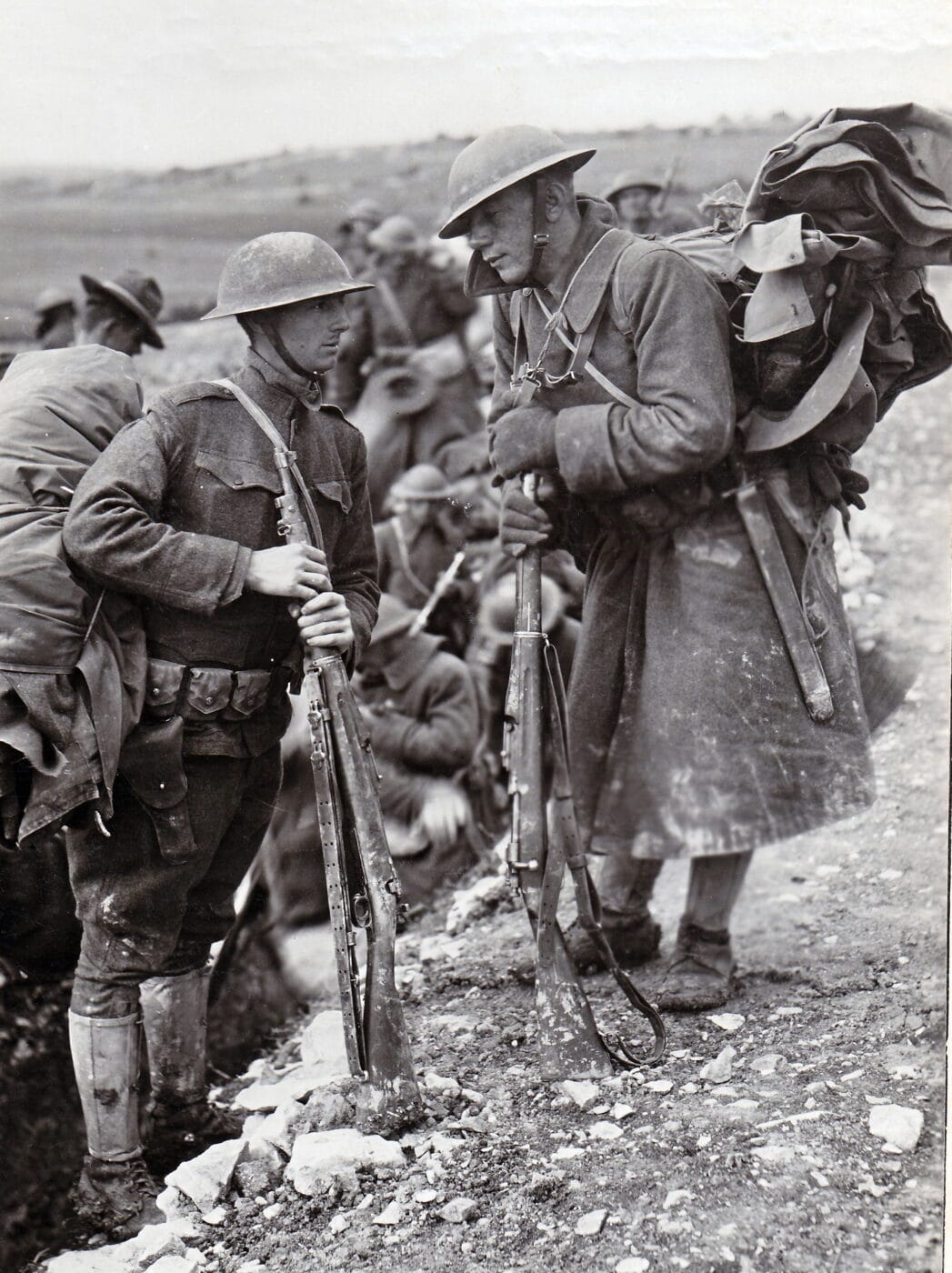
Janson gripped his M1903 Springfield rifle in a death rictus as he made a quick appraisal of the situation. Hill 142 was a strategic piece of real estate. If the Germans could take that hill they could rain fire down on the French flanks. A full dozen German soldiers were crawling up the hill with five MG08/15 light machineguns in tow. If the Krauts got those machineguns working they could turn the entire line.

Gunny Janson shouted the alarm, affixed his bayonet, and charged down the hill. He emptied his rifle as fast as he could cycle the action until he was eventually standing among the assaulting Germans. He dispatched the two senior German patrol leaders with his bayonet, forcing the remainder to flee. The vaunted German assault troops abandoned all five machineguns and fled back to safety. They had just gotten their rude introduction to the Devil Dogs of the U.S. Marine Corps.
Development of the Rifle
The M1903 Springfield rifle represented leapfrog technology. First adopted on June 19, 1903, the United States Rifle, Caliber .30-06, Model 1903 remained in service in various guises as an issue combat weapon throughout World War II. The M1903 Springfield was designed in response to American combat experience during the Spanish American War.
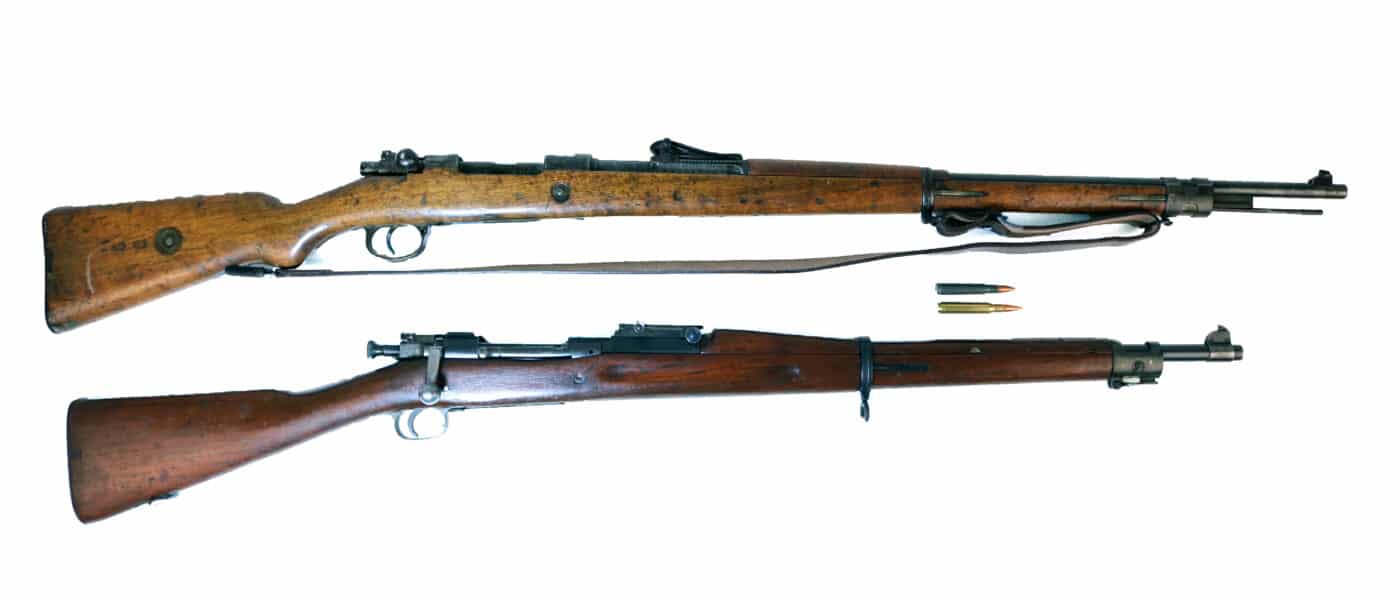
During the war with Spain in the latter parts of the 19th century, Spanish soldiers reaped a fearsome butcher’s bill with their M1893 Mauser bolt-action rifles. Using the German Mauser Gewehr 98 as well as the Krag-Jorgensen service rifle as inspiration, American engineers at Springfield Armory got to work designing a thoroughly modern bolt-action combat rifle. With the end of the Spanish American War, the U.S. government had thousands of captured Spanish Mausers to use for study.
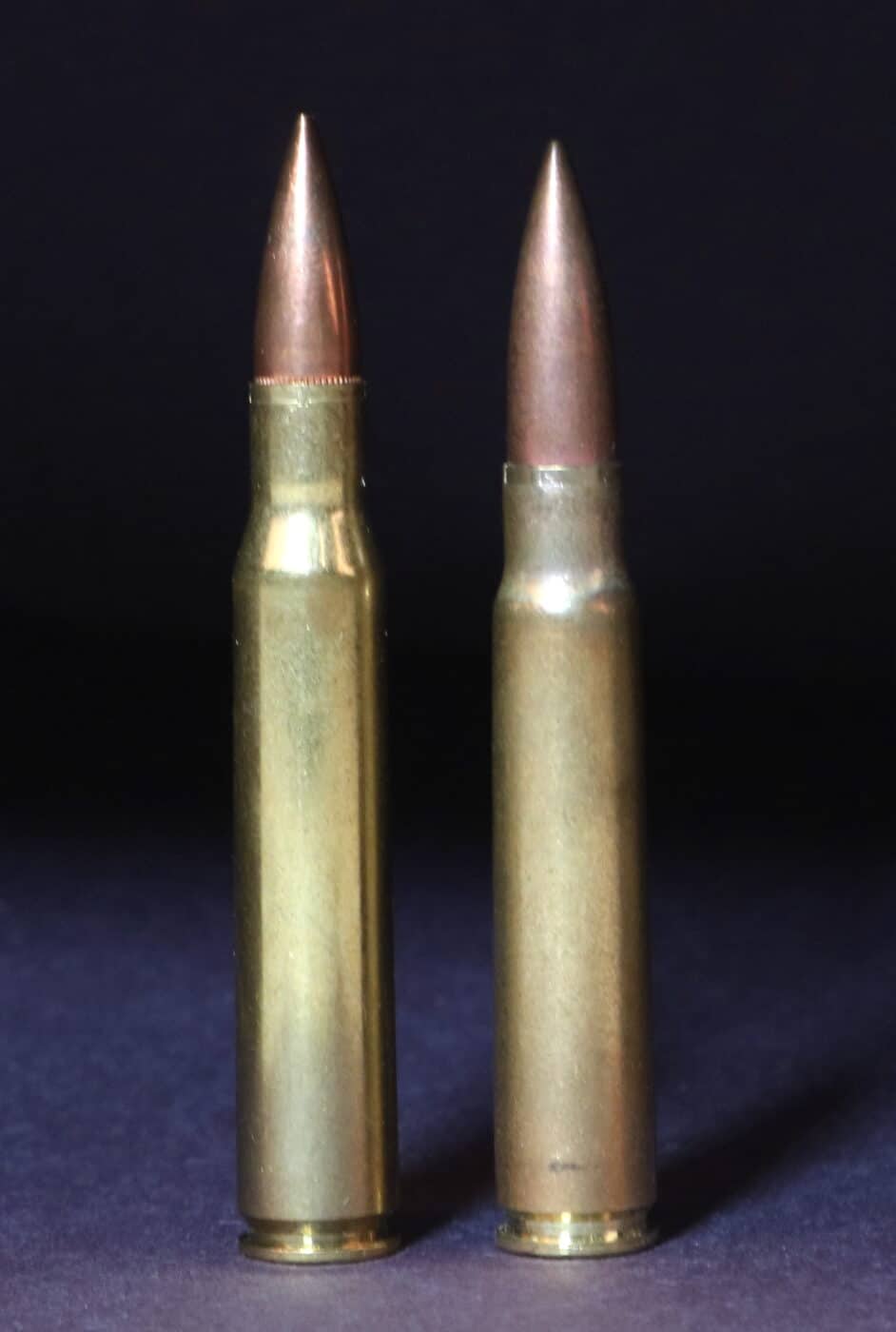
The primary mission was to contrive an action sufficiently robust to handle high pressure .30-06 Spitzer ammunition. Spitzer simply means pointed. Previous round-nosed bullets fired at lower velocities and subsequently demanded lower pressures.
The prototype developed in 1901 featured the stock and sights from the service Krag, a cock-on-opening action, and a turned-down bolt handle for fast manipulation. Those first rifles had dual locking lugs, a staggered-column magazine drawn from the M1893 Mauser, and a beefy external claw extractor. The barrel was 30” long, and the weapon included a generous safety lug on the side of the bolt behind the extractor. The addition of this safety lug was characteristic of the Mauser design, so much so that Mauser Werke successfully sued the United States for patent infringement. The U.S. government paid Mauser a cool quarter-million dollars to settle.
Perfecting the Legend
The definitive version featured a shorter 24” barrel and was called the “Ought-Three” by those who wielded it. Those early rifles featured a sliding rod-type bayonet. No less an expert than President Theodore Roosevelt was immediately underwhelmed by the design of this appendage.
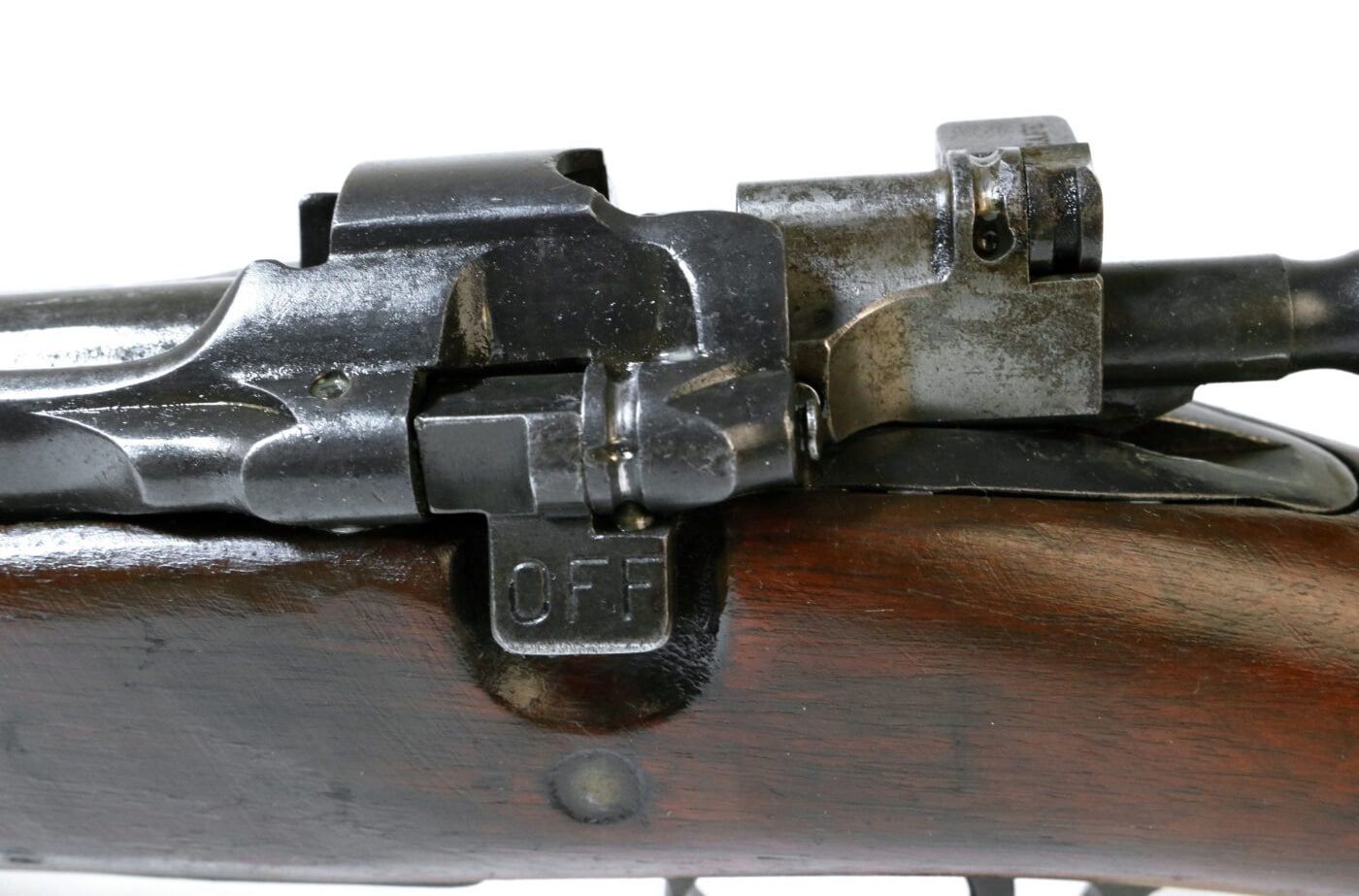
Soon after the rifle’s adoption, he drafted a letter to the Secretary of War that stated, in part, “I must say that I think that ramrod bayonet is about as poor an invention as I ever saw. As you observed, it broke short off as soon as hit with even moderate violence. It would have no moral effect and mighty little physical effect.” Hard to imagine our current chief executive enjoying such rarefied insights into a modern Army’s implements of chaos. In 1905 the Army introduced a more conventional sturdy blade sort.
The .30-06 round fired by the Ought-Three pushed a 150-gr. Spitzer bullet to 2,800 feet per second. This same round fed the subsequent semi-automatic M1 Garand as well as the Browning Automatic Rifle and M1919-series belt-fed machineguns. When coupled with the superb M1903 rifle and its outstanding combat sights, the .30-06 developed a well-deserved reputation for effectiveness.
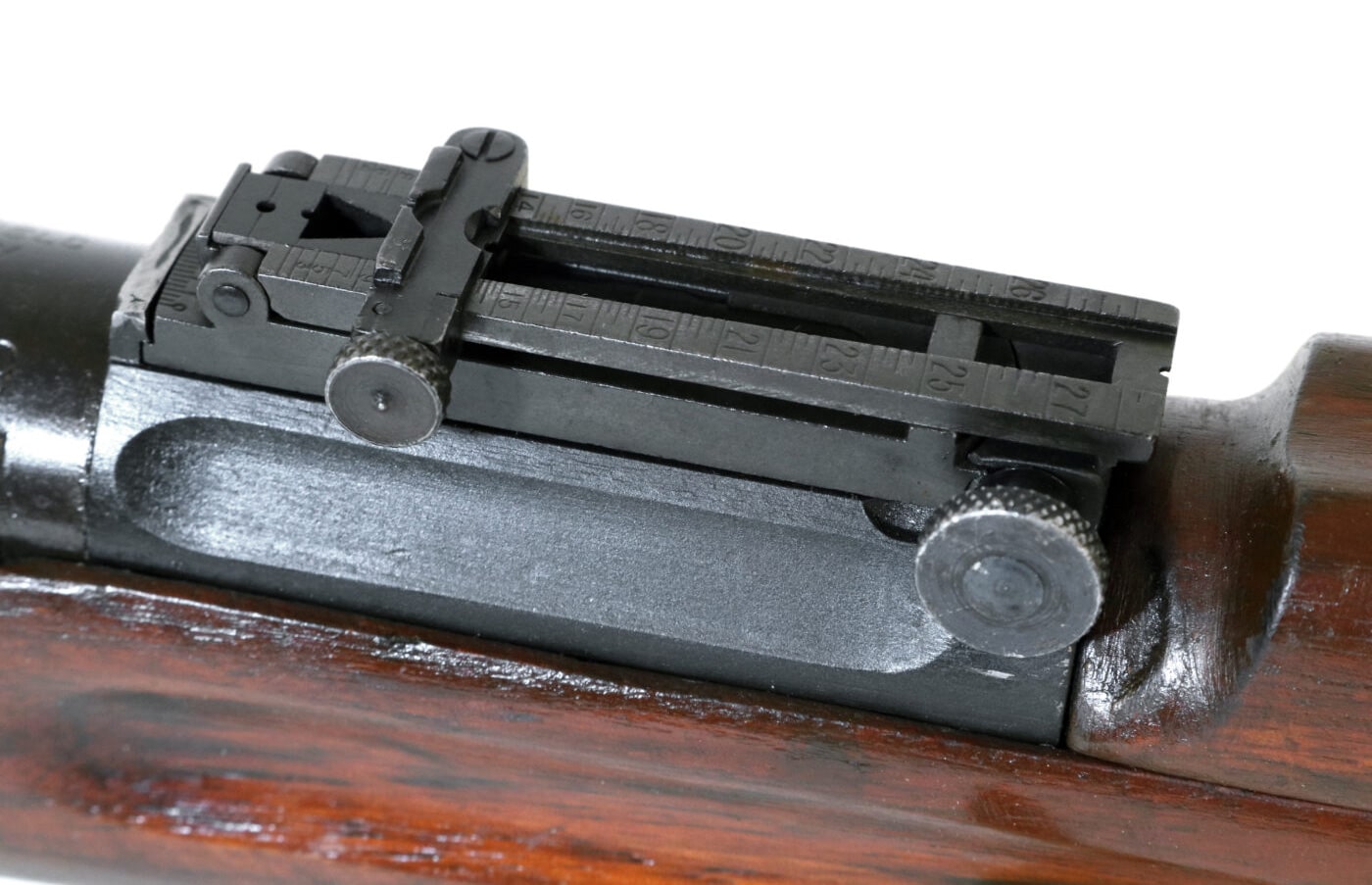
The M1903 got its proper introduction to combat during the Punitive Expedition of 1916. American troops armed with Ought-Threes exacted a heavy toll from Pancho Villa and his bandits. However, the real test of the M1903 came two years later in France.
The First War to End All Wars
At the outset of American involvement in WWI, we held some 843,239 M1903 rifles in active service. At the time these weapons were being produced by both the Massachusetts Springfield Armory and the Rock Island Armory. There were some justified concerns regarding questionable metallurgy in those early weapons. Stories made the rounds of receiver failures that resulted in some fairly significant injuries.
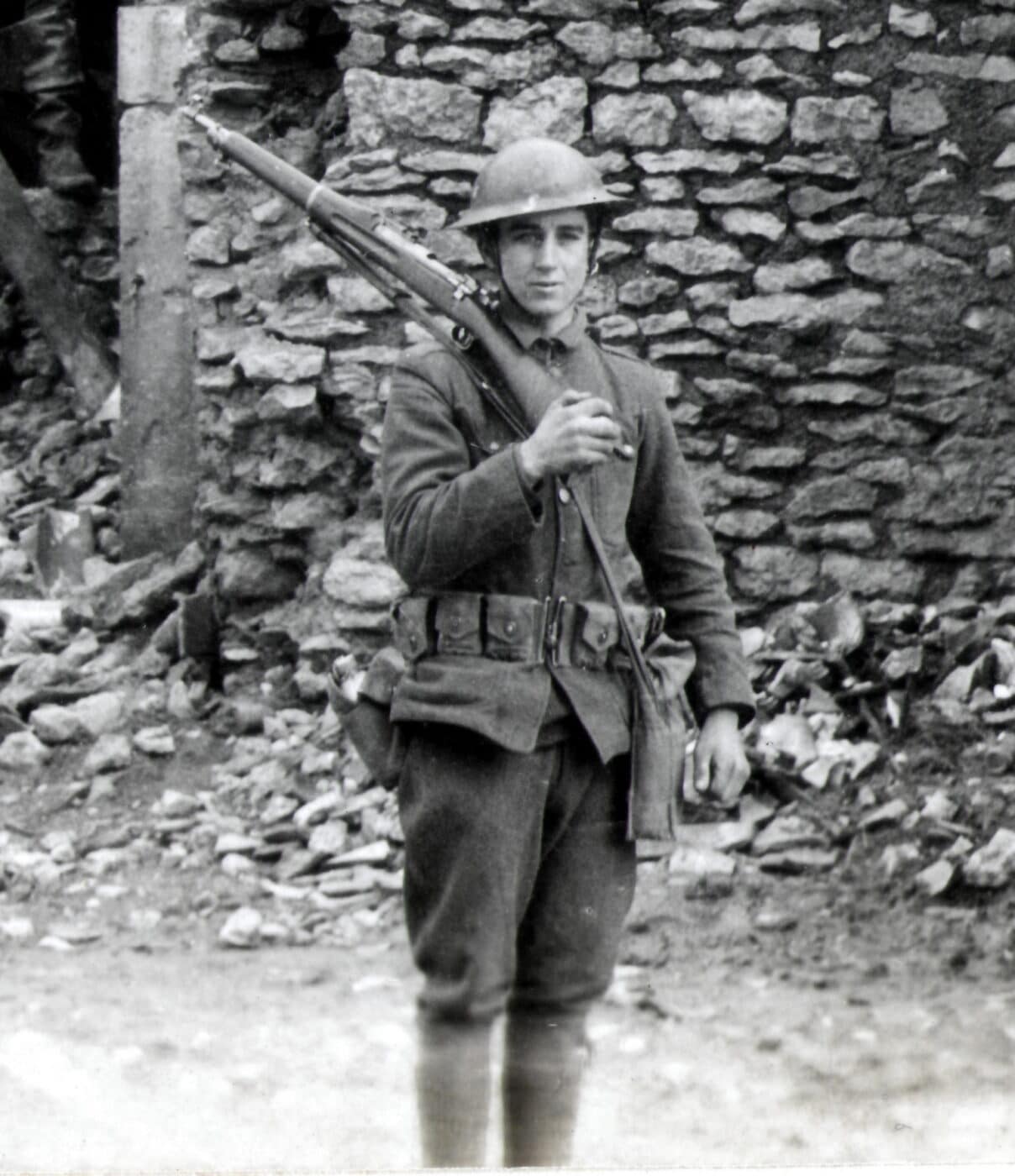
The Ought-Three sports a magazine cutoff on the left side of the receiver marked simply, “OFF” and “ON.” This device was a holdover from the days when commanders were concerned their troops might shoot too much in combat. Putting the lever in its center position allows the operator to remove the bolt for servicing. The safety is a pivoting flap on the back of the bolt akin to that of the Mauser. The Ought-Three safety is marked, “READY” and “SAFE.”
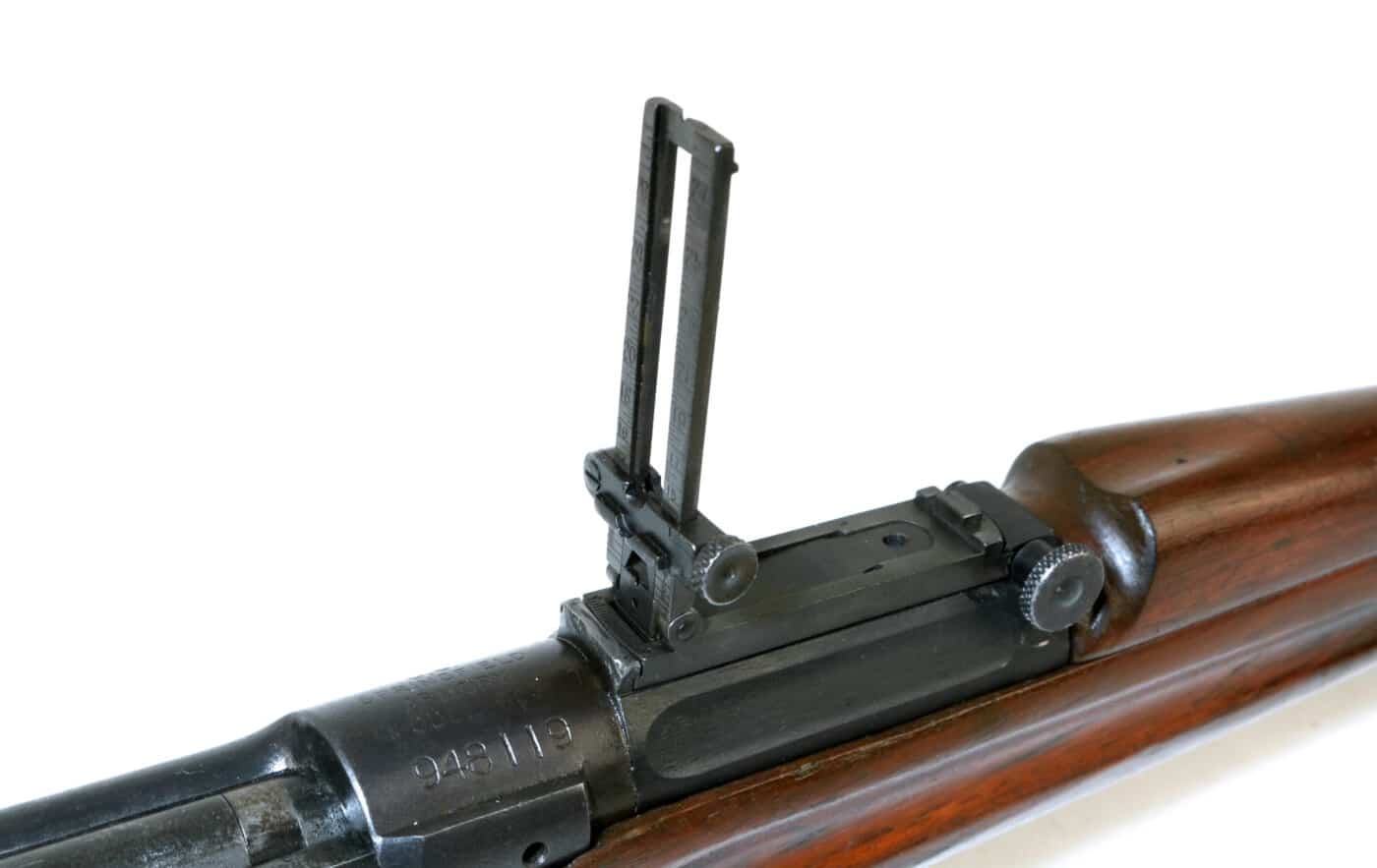
The front sight is a simple blade. The rear sight is graduated out to 2,800 yards and is more complicated than the space shuttle. Back then American soldiers were first and foremost riflemen. The Ought-Three was a true rifleman’s tool.
One of the most novel aspects of the M1903 story was the Pedersen Device. Rifles adopted to accept this clever widget featured a small window machined into the side of the receiver as an ejection port and were designated the Model 1903 Mark I. The Pedersen Device was awkward in action but undeniably inspired.
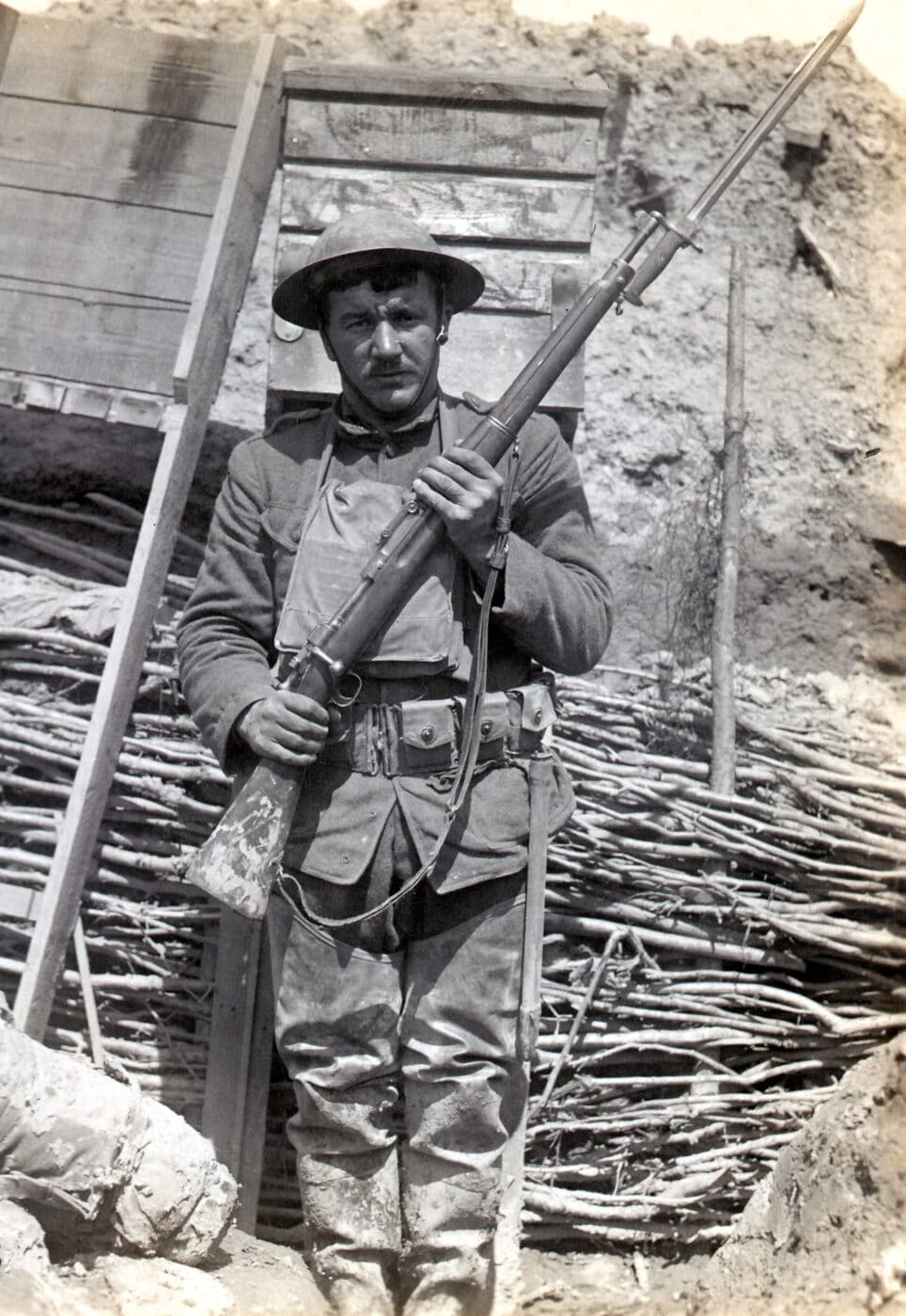
Developed by John Pedersen just before WWI, the Pedersen Device consisted of a drop-in bolt and 40-round magazine that allowed the standard bolt-action M1903 rifle to fire 7.65x20mm pistol cartridges semiautomatically. The awkward box magazine protruded at a 45-degree angle to the top right of the weapon. While a bit cumbersome, the Pedersen Device was purportedly quite effective.
Uncle Sam was taken with the thing and ordered 133,450 copies. The war ended before they could see action, so only 65,000 of these blowback conversions were actually delivered. In 1931 the Pedersen Device was declared surplus and the government grew weary of storing them. In typical government fashion, the entire lot was incinerated in an enormous bonfire. Around 100 copies escaped destruction. As you might imagine, these are fairly spendy today.
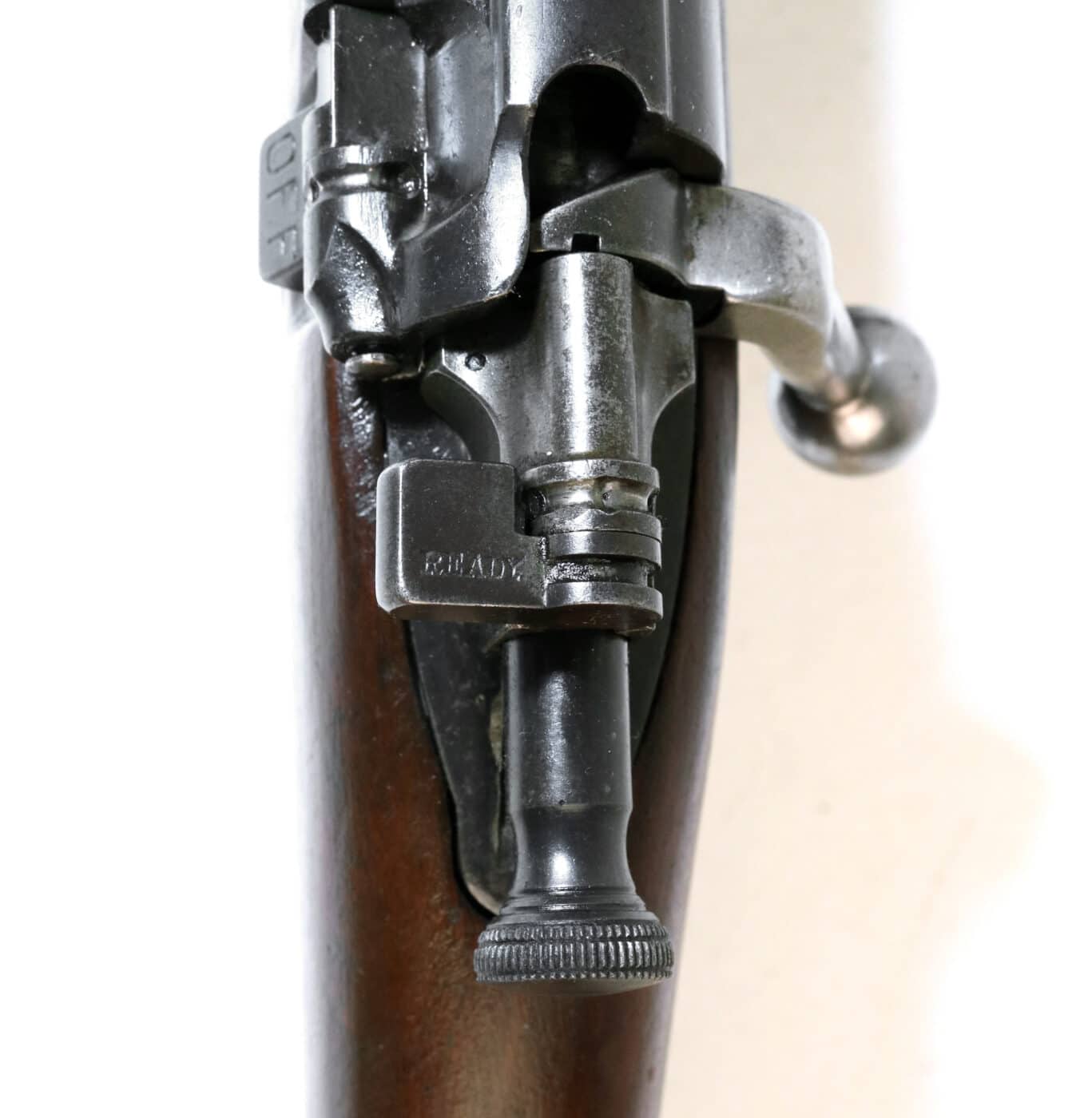
Denouement
A fun fact is that Ernest Janson was actually awarded two Medals of Honor, one through the Navy and the other the Army. He was one of five U.S. Marines to be so decorated during WWI. Soon thereafter this practice was discontinued.
Gunnery Sergeant Ernest Janson returned home after the war and served as a Marine Corps recruiter in New York City for a time. He was honored as a pallbearer during the formal burial of the Unknown Soldier on Armistice Day in 1921. He finally retired from the Corps in 1926 at the rank of Sergeant Major. After his retirement, SMG Janson returned to Long Island where he died at age 51, the archetypal American hero.
Editor’s Note: Please be sure to check out The Armory Life Forum, where you can comment about our daily articles, as well as just talk guns and gear. Click the “Go To Forum Thread” link below to jump in!
Join the Discussion
Continue Reading
Did you enjoy this article?

 253
253






